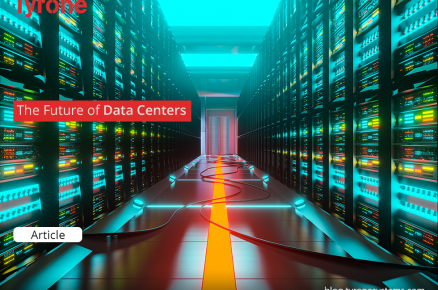In the rapidly evolving landscape of finance, blockchain technology and data sovereignty have emerged as pivotal concepts revolutionizing compliance practices. Understanding their synergy, particularly through the lens of sovereign cloud technology, is vital for stakeholders to navigate regulations effectively while leveraging technological advancements.
The Intersection of Blockchain and Data Sovereignty
Blockchain Benefits in Financial Services
Blockchain technology offers significant advantages to the financial sector, particularly in enhancing compliance and operational efficiency. By providing immutable, transparent, and auditable records of transactions, blockchain reduces counterparty risks and streamlines Know Your Customer (KYC) and Anti-Money Laundering (AML) processes. This technological advancement mitigates operational hazards, reduces the need for intermediaries, and ensures real-time verification, thus fostering trust and reliability necessary for financial transactions.
Understanding Data Sovereignty
Data sovereignty asserts that data within a nation’s borders must be subject to its laws and regulations. This is crucial in the financial sector, where compliance with local and international regulations is non-negotiable. The General Data Protection Regulation (GDPR) in the European Union, the California Consumer Privacy Act (CCPA) in the United States, and similar regulations globally mandate stringent data handling practices, ensuring data security and privacy.

Sovereign Cloud: A Linchpin for Compliance
What is a Sovereign Cloud?
A sovereign cloud is a cloud environment configured to comply with specific national or regional data sovereignty requirements. Unlike traditional cloud solutions, sovereign clouds ensure that data storage, processing, and transmission adhere to local laws, thereby preventing unauthorized foreign access and ensuring regulatory compliance.
Key Features of Sovereign Clouds
- Location Control Sovereign clouds offer control over data location, ensuring that data remains within specified national or regional boundaries. This control aligns with data residency requirements, which mandate that data be stored and processed within the jurisdiction of its origin.
- Access and Security Protocols Sovereign clouds utilize advanced encryption and strict access controls. Features like secure VPN connections, dedicated network capacity, and air-gapped regions provide robust security, ensuring that only authorized personnel within the jurisdiction can access the data.
- Operational Compliance Sovereign clouds meet stringent regulatory requirements by leveraging compliance-oriented designs. They require service providers to have appropriate certifications and understand the latest regulatory frameworks, offering tools to streamline compliance processes seamlessly.
The Synergy: Blockchain and Sovereign Cloud
Enhancing Compliance
When integrated with blockchain technology, sovereign clouds provide a fortified compliance environment. Blockchain’s immutable ledger offers unparalleled transparency and accountability, making it easier to audit financial transactions and ensure compliance with various regulatory standards.
For instance, in cross-border financial transactions, blockchain reduces the complexity and risks by providing a single source of truth accessible by authorized entities. This integration facilitates compliance with the different data sovereignty laws applicable across jurisdictions, ensuring secure and compliant data handling practices.
Securing Financial Data
Blockchain, combined with sovereign cloud environments, enhances data security and protection. Financial data, often sensitive and regulated, benefits from sovereign cloud’s encryption mechanisms and blockchain’s tamper-resistant attributes. These technologies collectively mitigate cyber threats and unauthorized access, ensuring data integrity and compliance with legal standards.
Operational Efficiency and Business Continuity
The integration of blockchain with sovereign clouds also optimizes operational efficiency. By using blockchain for KYC and AML compliance, financial institutions reduce the need for manual documentation, minimizing errors and expediting verification processes. Sovereign clouds ensure business continuity through scalable and redundant solutions, mitigating risks associated with data breaches and ensuring that financial services remain resilient against disruptions.
Implementing Blockchain and Sovereign Clouds in Finance
Challenges and Considerations
Adopting blockchain within sovereign clouds requires careful consideration of regulatory landscapes and technological capabilities. Financial institutions must collaborate with sovereign cloud providers knowledgeable in compliance requirements and equipped with the latest certifications. Ensuring that blockchain applications are compliant with data sovereignty laws and integrating them within the secure environment of a sovereign cloud is essential for effective implementation.
Practical Steps for Adoption
- Assess Regulatory Requirements Financial institutions must thoroughly assess the regulatory requirements of the jurisdictions in which they operate. Understanding these regulations is critical to configuring sovereign clouds and blockchain solutions that comply with local and international laws.
- Choose the Right Service Providers Partnering with reputable sovereign cloud and blockchain service providers is crucial. These providers should have the expertise and resources to meet compliance needs, offer robust operational support, and maintain up-to-date certifications and legal entities.
- Implement Strong Security Measures Employing strong encryption protocols and access controls is non-negotiable. Both data at rest and data in transit should be encrypted using approved standards, and access should be restricted to authorized personnel within the jurisdiction.

Conclusion
The integration of blockchain technology with sovereign cloud environments represents a transformative approach to compliance in the financial sector. By enhancing data security, ensuring regulatory adherence, and improving operational efficiency, this synergy addresses the complexities of modern financial transactions while unlocking new potentials for growth and innovation. Stakeholders must recognize the importance of these technologies and take strategic steps to adopt and implement them, ensuring their financial institutions are well-equipped to navigate the evolving regulatory landscape.












